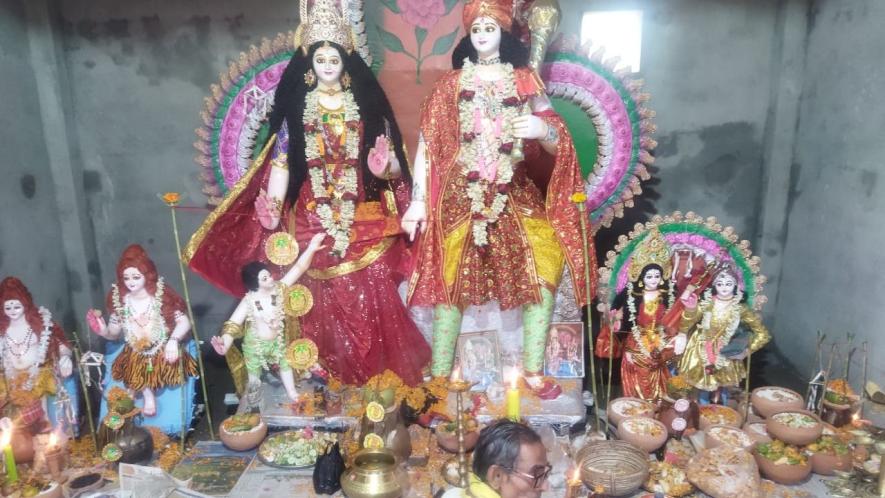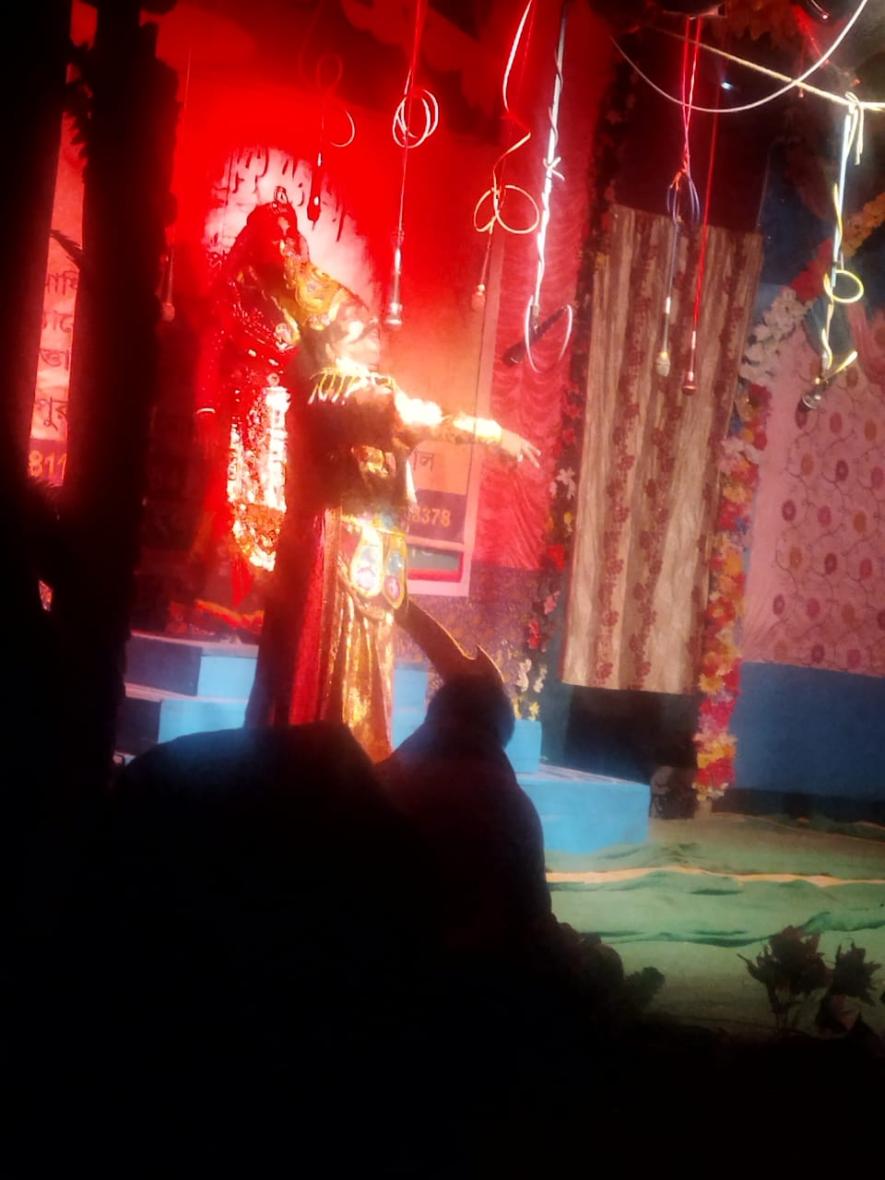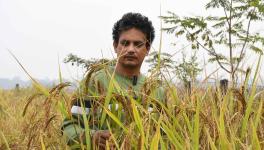Bengal: Bonbibi – a Syncretic Forest Deity in Far-Flung Areas of Sunderbans

Kalidaspur/Hetalbari: “The syncretic goddess Bonbibi holds us together during our trips to the islands infested by Dakhin Ray (a term for tiger). She is a half-human goddess with huge powers, who we worship on the full moon night of in February end,” Gour Sarkar, said a fisher and traditional singer in Kalidaspur’s Hetalbari region that is nestled deep inside the tiger territory opposite the Marichjhanpi forests, which are now famous for roaming tigers. Sarkar is the president of Kalidaspur Hetalbari Machh Kakra Byabsayee Samiti (a fish and crab trade association) that organises the Bonobibi Utsav.
Interestingly, Bonbibi is a Muslim goddess, who is worshipped by all fishers. No brahmin is allowed to do the rituals there, which include offering puja to the goddess by a priest selected from among the fishers.
The rituals include loud chanting of the Panchali, a book that contains the mantras for worshipping Bonbibi, in the puja pandal. All the worshippers in the area are Hindus but the Panchali is in Bengal alphabet that is written from right to left, similar to Urdu. The Panchali contains Urdu syllables, about 60% of the words are in Urdu and next comes Bengali words.

In the morning of puja day, the goddess is first worshipped in the Marichjhanpi forests in a permanent temple there. The area is notorious for tiger attacks and has been declared a permanent red alert zone by the state forest department.
On the day of worship, thousands of followers of Bonbibi reach the Marichjhanpi forests, kayaking on small boats to offer puja to her and her brother Shah Jangali Narayani, Dukhe (a child) and Dukhe’s mother (a widow). After that, pujas are offered in several temples that have sprung up in the Kalidaspur area and its vicinity.
The bhog (food offered to the deity) is cooked in clay pots and is known as kheer (sweet milk payasam). Tens of thousands from the nearby islands take part in the festivities and in the fair held in the area.
At night, a Jatra Pala Gaan, a form of traditional theatre, is organised, with participation of local artistes who highlight the deeds of Bonbibi.
The term Bonbibi is itself syncretic. It means ‘goddess of the forest’, half of the word is in Bengali and half in Urdu. The songs in the Jatra Pala speak of Dakhin Ray, the ‘tiger god’ who was vanquished by Bonbibi.

Bonbibir Palagaan is a traditional dramatic performance about the worship of the Bonbibi, the cult goddess. This popular performance-ritual, exclusively practised in the Sundarbans lower delta region of West Bengal (India) and in Bangladesh, has survived orally or through handwritten manuscripts in the periphery, without receiving much recognition. The word ‘pala’ means a ‘long narrative verse’ and ‘gaan’ means ‘song’ in Bengali.
Traditionally, Bonbibir Palagaan was simply recited or sung as eulogy to the deity to invoke her blessings. It later took the form of as an enactment, where the various exploits of Bonbibi in Bhatir Desh (the land of tides, i.e., the Sundarbans) are acted out.
The fact that this performance-ritual is practised even today suggests the continuity of this tradition of worship, which is also an emblem of the syncretic nature of the region.

The Sundarbans is an archipelago situated in the southernmost part of the Gangetic basin and extends between two rivers—river Hooghly in West Bengal, and river Meghna in Bangladesh. The word ‘Sundarbans’ literally means ‘beautiful forest’. The word ‘sundar’ also comes from the Sundari (Heritiera fomes) tree in the mangroves of Sundarbans. The entire region spans 25,500 sq. km, two-thirds of which lie in Bangladesh and the rest in India.
The Sundarbans in India spans two districts in West Bengal—North and South 24 Parganas—covering 19 blocks and an area of 9,630 sq km, of which almost half is forested. It is the largest natural habitat of the Royal Bengal Tigers, and is home to nearly 271 tigers in India alone.
Out of the 102 islands in the Indian Sundarbans, about 54 are inhabited and the rest are notified as reserve forests. What is less known is that the region is also the abode of about five million people. Located on the coastline, the area is prone to cyclones and houses one of the largest tracts of estuarine forests in the world. This makes the residents vulnerable to various natural calamities.
In a landscape like this, Bonobibi has become a focal point for people’s faith and devotion. The residents, who depend on the forest for their daily survival by fetching wood, honey, wax, fish, and crabs from the Sundarbans, are the primary worshippers.
Bonbibi is believed to have travelled on Allah’s orders from Medina to the Sundarbans to protect distressed residents as well as animals of the forest. She is a syncretic cult figure for both Hindus and Muslims of the region.
“Interestingly, the RSS (Rashtriya Swayamsevak Sangh) in Bengal tried to change her name to Bondevi, but with no success, as nearly lakhs of Sundarbans residents are followers of Bonobibi and the new name does not hold any meaning for them” Sarkar told Newsclick .
Get the latest reports & analysis with people's perspective on Protests, movements & deep analytical videos, discussions of the current affairs in your Telegram app. Subscribe to NewsClick's Telegram channel & get Real-Time updates on stories, as they get published on our website.























